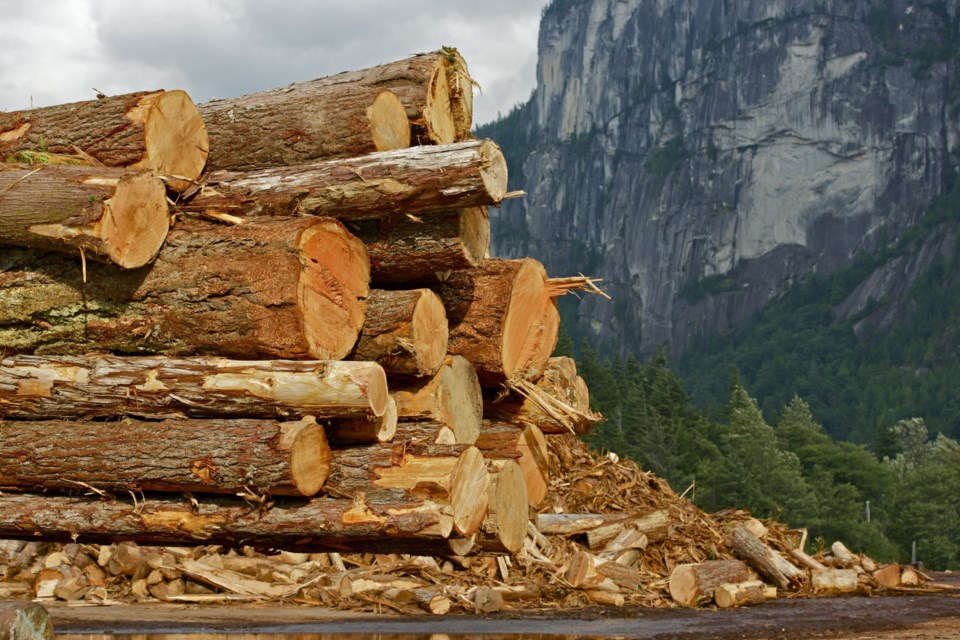Anyone who was waiting anxiously for bold changes to B.C.’s logging practices that would bring an end to protests, conflict, and chaos in the woods can rest easy now. That is not the plan.
The government introduced changes to the Forest and Range Practices Act this week that will do little to either quell the ongoing confrontations in the old growth forests on Vancouver Island or bring relief to hurting forestry dependent communities in the B.C. Interior.
To be fair, the past two years have not exactly created the circumstances for bold change to one of the pillar industries of the province: The projected deficit following nearly two years of pandemic chaos is $9.7 billion this fiscal year.
But the NDP are running out of time to make lasting change to an industry that has seen very little change in the way it is managed since the first War in the Woods decades ago.
Forests Minister Katrine Conroy says the legislation has a focus on sustainability ad will return more benefits to people and local communities. Both are long-overdue principles that have been glaringly absent from B.C. forest practices to date.
“Forestry policies – put in place two decades ago – have limited our ability to fight climate change, protect old growth forests and share the benefits with Indigenous and local communities,” Conroy said. “By increasing public control between government and First Nations, we’re committed to smarter management of our forests that prioritizes public benefits and engagement now and into the future.”
Conroy lauds the legislation for “repositioning government as the land manager.” This is a stark reminder that the government has not been, which goes a long way to explain why we have ended up with an ever-shrinking number of jobs in a sector where international companies are reaping record profits.
In 2019, there were 50,599 people employed in the forest sector, according to Statistics Canada, including 11,209 in forestry and logging and 26,776 in wood product manufacturing. There was an estimated 54 million cubic metres of timber harvested in B.C. that year.
That’s 1,067 cubic metres of timber harvested per job.
In 1999, there were 93,479 people employed by the sector, including 17,774 in forestry and logging and 41,233 in wood product manufacturing. There was 76,929,867 cubic metres of timber harvested.
That’s 823 cubic metres of timber harvested per job.
In 1991 (the earliest year employment figures are available from Statistic Canada), there were 97,149 people employed and 74,705,594 cubic hectares harvested.
That’s 769 cubic metres of timber harvested per job.
We’re getting less and less bang for our bucking and paying a greater and greater price.
The minister also says the legislation “prioritizes forest health,” and the legislation does indeed appear to acknowledge that trees are part of a larger landscape that should be taken into account. The fact that this is new also may offer some more important clues about how we have gotten to where we are.
The legislation will bring increased local control, according to the minister, but there is no suggestion of local benefits agreements for communities that have watched a fairly steady flow of timber out over the past several decades with fewer jobs to show for it.
The legislation does include a role for First Nations in establishing the landscape-level plans, but it stops well short of consent, settling instead for “collaboration” from First Nations communities, and does not set out a legislative requirement for revenue-sharing.
There are about 22 million hectares of forested land considered part of the public timber harvesting land base, of the 57.4 million hectares of forest in B.C., according to the province. Less than one per cent of the 22 million hectares a is harvested each year, it says.
I live in a forestry-dependent community, one that has been ravaged by wildfire every summer for the past several years. Ours was one of at least 16 mills and forestry plants that shut down in 2019, leaving thousands without jobs.
Last year forestry companies enjoyed record-setting profits. How man mills and plants reopened? Not ours.
The government has yet to fulfil its promise of transforming old-growth management in accordance with recommendations from an independent panel or its promise of Interior forest sector renewal.
Perhaps those changes will be bolder, because the government may have met the letter of the law on its promised modernization of B.C. forest policy but so far it falls far short of the spirit of the promise.
Dene Moore is an award-winning journalist and writer. A news editor and reporter for The Canadian Press news agency for 16 years, Moore is now a freelance journalist living in the South Cariboo.
SWIM ON:
- Dene Moore last wrote that plagued by low vaccination rates, much of Northern BC is going back to more restrictive measures.
- ‘After six months of raging protests in the woods, the court tossed it all back at Premier John Horgan.’ Rob Shaw on a key ruling.
- In 2020, Carol Anne Hilton noted that one of the industries that will be most affected by UNDRIP is forestry. But the good news is much of it was already moving in the right direction.



